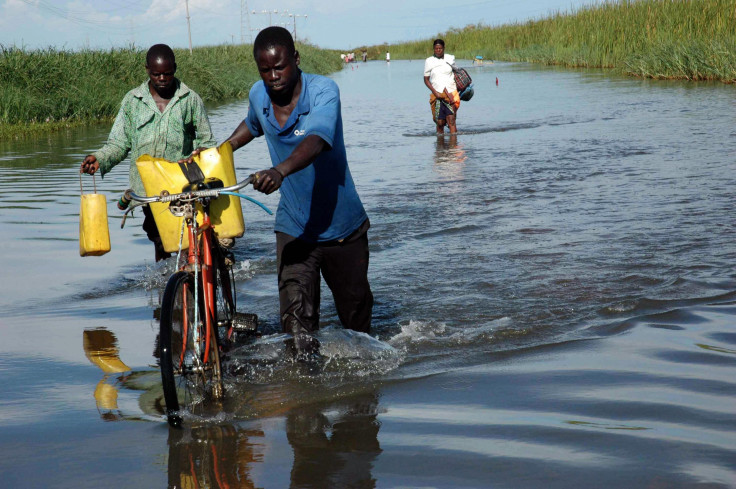Devastating Floods In Africa Killed 25 Times More People Than Hurricane Harvey

Last month’s rain initially brought relief to drought-stricken parts of Africa but didn't stop as it inundated villages with flood water, which led to staggering death tolls reaching the hundreds. The August floods in Africa have killed about 25 times more people than Hurricane Harvey, which left 70 people dead.
Hurricane Harvey displaced tens of thousands of residents living in the Lone Star State. As the state begins rebuilding efforts, flood waters recede and businesses begin to open their doors once more, some African residents won't recognize some of the flood-ravished towns they called home.
Some of the devastation in Texas can be cleaned up. However, much of the flooding in Africa intensified due to years of inadequate drainage systems and poor infrastructure. While officials successfully rescued some Texas residents, those in Africa weren’t afforded the same relief as non-stop rain and mudslides claimed over 1,200 lives in August.
FLOODS: Benue state capital, Makurdi has been flooded after series of rainfall. Residents seek emergency intervention.
— Sumner Shagari Sambo (@Sumner_Sambo) August 30, 2017
Photos:Ibrahim Obala pic.twitter.com/k1azlSkey0
Over 100,000 residents have been displaced in Benue, Nigeria, a week after severe rainfall. Conversely, flood waters and mudslides damaged many local markets, thousands of homes, and government offices.
President Muhammadu Buhari requested relief efforts but claimed that the Nigerian state has seen very little aid. Collins Uma, a Nigerian-based writer, said that most of the relief attempts have been made possible by "efforts of individuals and groups, not the government."
"This happens every year and will likely happen next year, but the government pays lip service to it," Uma told Quartz. "If we had working drainage systems, this would not happen."
Coming up on #AfricaLive: Tens of Thousands displaced by floods in central Nigeria pic.twitter.com/7hP69CiUBF
— CGTN Africa (@cgtnafrica) September 2, 2017
In August, the Sudan government issued a warning to residents regarding the floods. The government warned that Khartoum and nearby areas could witness their worst flooding in over 100 years.
The Irrigation Ministry released a statement Aug. 23 stating that the disaster could strike two days after intense rain hit Ethiopia. Ethiopia is the connecting source of the Blue Nile, which pours into the Great River Nile that crosses the Sudanese capital.
The aftermath of torrential rainfalls in Makurdi, Benue State has left close to 3,000 houses submerged and thousands of residents homeless pic.twitter.com/nFE9AaWM9W
— The Guardian Nigeria (@GuardianNigeria) August 31, 2017
"The Blue Nile water levels have reached their highest in 100 years," the statement read. "They reached 17.1 meters (56 feet), the highest near the border between Ethiopia and Sudan."
Torrential downpour and flooding caused a massive mudslide last month in Freetown, Sierra Leone. The mudslide displaced hundreds and killed about 500 people, CNN reported.
Local resident Gabriel Fattah Manga claimed he felt the ground shake. As he prepared himself for work, he saw massive amounts of water and "this whole mountain coming down." Manga survived but stated that many of his family members weren’t as fortunate.
"I lost my family, I lost my people. I lost my place," he told CNN. "All has gone."
The intense flooding and mudslides have displaced about 20,000 Africans, presidential spokesman Abdulai Bayraytay told CNN last month. Heavy rain and flooding are not uncommon in Africa, which takes place during its rainy season.
However, this year has seen more rain than usual as Freetown received about 27 inches of rain between July 1 and August 13 — which is more than double its average of 11.8 inches — according to the U.S. National Weather Service's Climate Prediction Center.
© Copyright IBTimes 2024. All rights reserved.





















